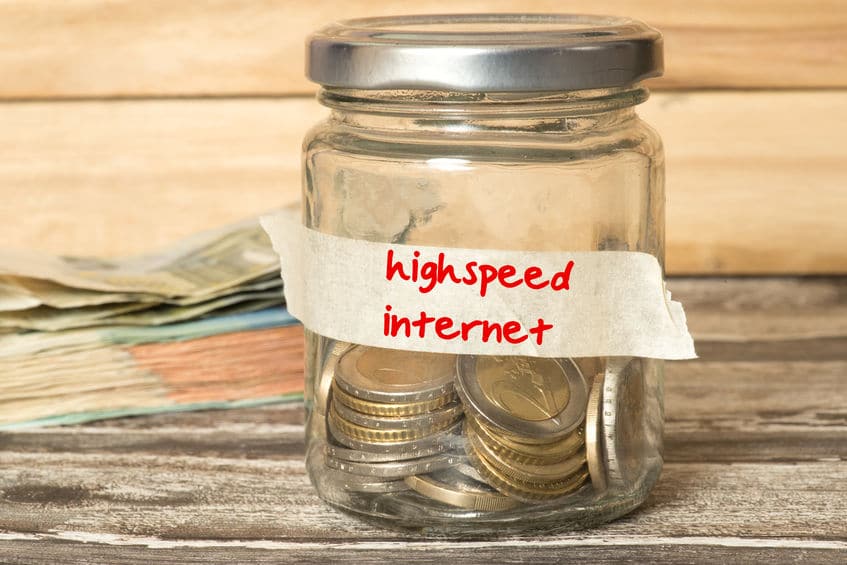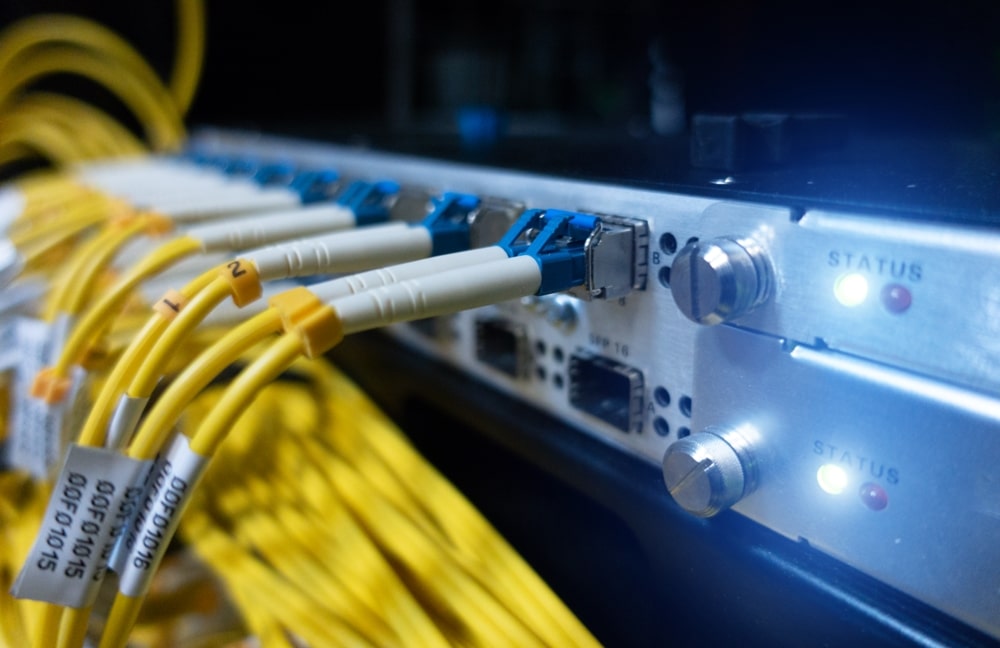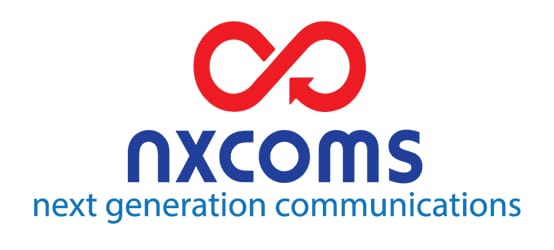
Sep 4, 2023 | Blog, Connectivity, Data, News
If you’re thinking about making the switch to full fibre optic internet, the cost of it is likely high on your list of questions.
Isn’t it going to be expensive to use new technology?
And the trouble is, trying to find out how much the change-over will set you back can be overwhelming.
There is a vast range of offers available from different providers… How are you supposed to know who or what to opt for? How do you compare like for like? Which deal will suit your needs best?
So, we’re here to shed some light on the subject. Read on to find out how much it costs to switch to full fibre optic internet.
First Things First…
Is fibre technology available in your area yet?
There’s a chance it might not be.
By the end of 2025, the whole copper cable network that so many of us still depend on to send and receive data will no longer be operational. This momentous event has been dubbed the Big Copper Switch-Off.
If your business hasn’t switched to full fibre optic internet by then, you will have a lot of unscheduled offline time until you get hooked up. It won’t just be you either – loads of other households and businesses will be clamouring to get back online ASAP. And where there’s heavy demand, prices will rise, so it’ll almost certainly cost you more.
Want to know more about the big copper switch-off? Read this blog.
So what does that mean for you at the moment? Well, because Openreach is completing the switch in phases, full-fibre internet might still need to be created in your area. Full fibre technology is more likely to be installed in high-population areas like big towns and cities first.
Check with your internet service provider to see if you can switch to full fibre optic internet. And while you’re there, ask them if they’ll do you a deal for tacking full fibre broadband onto your existing business phones account. This could save you time and money spent searching elsewhere for more expensive rates.
What Does It Cost To Switch To Full Fibre Optic Internet?
Generally speaking, you can expect to pay somewhere between £40 and £100 per month for contended business full fibre broadband. This increases to about £300 for uncontended leased line packages, when you don’t share your bandwidth with anyone else.
The beauty of fibre broadband is that it’s really flexible, meaning businesses can choose a package that perfectly suits their needs. This also means quite a few factors contribute to the overall cost when you switch to full fibre optic internet.
Let’s take a look at them.
Add-Ons
Need extra monthly downloads? 4G/5G backup?
No problem.
Many providers offer extras that business owners can add to their internet package of choice to tailor it, so it perfectly suits their monthly internet-related activities.
Set Up Fees
Finding providers who don’t charge a set-up fee is easy, but before committing, it’s crucial to check the details of the package you’re opting for. Signing a contract for an internet package that won’t meet your business internet is frustrating, takes time to sort out and may cost you a packet to end a contract early.
Of providers who currently charge a new user to get them connected, the typical one-off price ranges from around £30 to £95.
Upfront Fee Vs Monthly Fee
When a business signs up for a new internet contract, they’re usually graced with an introductory monthly cost that increases after the initial contract period ends. So whilst the ‘upfront’ monthly fee begins at £25, it might rise to £55 after the first 12 months. The providers can be even sneakier by tying you into a 2 or 3-year contract, then hiking up the prices after the second year. This sort of unexpected fee can occur with the larger providers, such as BT and Virgin Media.
Always double-check the figures when comparing broadband packages to avoid nasty surprises later down the line. And don’t be afraid to let companies know if you have a better deal on the table elsewhere – they might negotiate with you.
Average Speed
Internet providers tend to feature a tiered system of business broadband offerings so that they can appeal to a wide range of customers. Low-tier packages usually give users 80mb for approximately £30 to £40 per month. Higher tiers, up to 1gb hyperfast full business broadband, start at around £45 for a basic package but can reach the hundreds.
What Should You Consider When You Switch To Full Fibre Optic Internet?
Whilst it’s certainly an important factor, the cost isn’t the only part of choosing a full fibre optic internet provider.
Have you looked into their customer service record? What about response times? Are they likely to issue complicated contracts that leave you in a spin?
If you tend to gravitate towards the big-league business internet providers, you might come up against these less-than-desirable blockers to efficient internet usage, and more.
Take slow response times, for example. Larger ISPs have a tonne of customers, so naturally, call waiting times and the time it takes to fix issues are going to be much slower than the more personal touch of a small company.
And what use is a cheap, off-the-shelf deal if you can’t get through to the service team when things go south?
Not convinced? Read more about large telecom corporation issues in our recent blog, ‘5 Reasons To Avoid The Big Telecoms Providers For Your Business Internet’
Ready To Make The Switch To Full Fibre Optic Internet?
The market is vast and can feel hard to navigate.
Depending on your business’s internet needs, full fibre optic broadband could cost an average size business from £45 to £100 a month.
Above all, it’s crucial to check the finer details of any contract before dishing out for full fibre optic internet. And don’t forget, there’s more choice than just the names you see on TV ads. Smaller, independent telecoms providers have expertise in matching businesses with packages that deliver reliability, value and quality.
Smaller comms providers can tailor their services to meet the needs of your business, can fix issues quickly and pride themselves on customer service.
Still not convinced full fibre optic broadband is for you? Don’t know enough about it to make the leap? Find out all about the benefits of full fibre optic broadband in our recent blog.

Jul 24, 2023 | Blog, Cloud, Connectivity, Data, News
We’re staring down the barrel of The Big Copper Switch-Off.
In two years, the whole copper cable network that so many of us still rely on for our home and business internet will no longer be operational.
What that means is that if your business is still dependent on copper cabling when the time comes, you’re going to be offline until you make the switch to fibre optic technology.
And we mean COMPLETELY offline.
Think about it. How much of the day-to-day running of your business depends on a healthy internet connection? Do you use email? Do you have a website? Use video conferencing? Cloud-based servers, internet banking, even phone systems?
How will your customers get in contact with you? And how will your employees get their work done with no internet access?
It’s simple. They won’t.
With that in mind, smart business owners like you are doing their homework now to find out all about fibre optic broadband and how they can get it.
Oh yeah, and that little thing called money. How much does business full fibre internet cost?
Recap: What Is Full Fibre?
It might feel a tad overwhelming when you’re researching fibre optic broadband to find out how much full fibre business internet costs.
Terms like FTTP, Super-fast, FTTC, Ultra-fast and Hyper-fast might start to swim before your eyes as you struggle through jargon-heavy web pages, searching for a simple answer. You just want to know one thing. How much does business full fibre internet cost?!
So why is it so complicated?
Well, our ol’ copper cable network is still in use. As dramatic as it sounds, the big switch-off is more of a switchover, happening in phases, with Openreach on task to have made the full swap by the end of 2025.
And so up until that point, there will be telecoms packages available that utilise both technologies – copper and fibre optics – to smooth the process of installing fibre optic infrastructure UK-wide and getting everyone connected. And, by making use of both data transfer methods, businesses can simultaneously achieve faster broadband and delay stumping the cash for full fibre internet cost. For now, at least.
So what exactly is full fibre?
Full fibre, also referred to as FTTP (or fibre to the premises), is a single, leased line of beautifully thin and flexible fibres wrapped around a glass core that transmits your data at light speed. One single cable for your business and your business alone covers the whole distance from the exchange to the green cabinet, straight to your front door.
The alternative is a combination of fibre optic and copper. Here, fibre optic cable is used to the cabinet, where the copper cabling picks up the baton and continues the data transmission to your premises. Many homes and businesses use this now if they’re on a ‘fibre optic’ broadband package. It’s a kind of halfway house.
But we will all need full fibre in a couple of years. It’ll be full fibre or nothing. Because when the copper cables go kaput, there won’t be any hybrid broadband packages anymore, leaving most people disconnected from the world wide web.
We’re painting a pretty murky picture here, aren’t we? Don’t worry. The reality of the big copper switch-off is quite the opposite. It’s advancing us to a position where your internet reliability and speeds will be phenomenal.
You’ll say goodbye to competing for bandwidth on the old copper cable system when you change. You’ll say adios to inexplicable drops in connectivity and a real-time speed that never reaches what your comms provider promises.
Full fibre means a super dependable connection with incredible internet speed and quick fixes if anything goes wrong.
Not sure how fibre optics differ from regular broadband? Catch up on this recent blog.
How Much Does Business Full Fibre Internet Cost?
Full fibre internet cost isn’t as clear cut as you’ll want it to be, I’m afraid.
But there’s good reason for it. Full fibre internet cost is so variable because businesses can tailor their package. How fast do you want to get your downloads? How much bandwidth do you need? 4G backup? And this isn’t an exhaustive list of things to consider – there’s a whole world of possibility.
The beauty of full fibre is how completely customisable it is.
But that’s not the answer you want, is it?! So let’s get down to some numbers.
How much does full fibre internet cost?
Providers generally offer tiered packages to meet a wide range of customer needs. Prices for full fibre start with basic packages, with introductory prices of around £40 a month that increase after the first year or so. With these ‘essential’, lower-cost packages, you’re looking at around 100Mbps download speed for that cost. And that will be enough for plenty of smaller businesses.
Higher-tier packages, where you can expect to pay anywhere up from £100 to £300 a month for around 1Gb speeds with varying extras, are the gold standard of business fibre optics. These deals often come with the latest WiFi 6 broadband routers, hefty guarantees, free installation and different premium features that you can mix and match to suit your needs.
Is Your Area Covered?
When you want gold-standard broadband, you go fibre optic. But can your business get it?
Fibre optic is a super reliable technology that will futureproof your business, but it’s new, which means it’s not available everywhere – yet.
The great news is that over 90% of UK towns and cities are already hooked up. Providers have even managed to roll out connections to remote areas and islands, so there’s a very good chance your business will be able to get easy access to the Ferrari-fast internet speeds of fibre optic broadband.
Business Fibre Or Domestic Fibre Optic Internet?
So you’ve decided to make the jump. You’re a wise owl. Getting ahead of the game and installing fibre optic now, before the real countdown to the big copper switch-off begins, means you can start enjoying the many benefits immediately.
And with remote working here to stay, you need to make sure any employees working flexibly or from home have access to the same superfast connection. Not only will a speedy, stable internet ensure your people are working at optimum productivity, but setting up adequate IT solutions will make it easier for them to stay secure, connected and motivated. Do your research and consider which business internet options will be kinder to your wallet. Depending on the number of remote workers you have, paying for a few domestic fibre optic packages for your employees might be less costly than opting for business fibre over multiple locations.
Big vs Small Telecom Providers
The size and status of your telecom provider can influence how much it costs you.
Many business owners will automatically lean towards the big names once they’ve decided to make the switch, but this can be an expensive mistake.
Larger companies provide off-the-shelf packages that are unlikely to match your needs, don’t have time to learn about you and your business and are notoriously slow to respond to internet issues, costing you serious money.
Need we say more?
We’ve written a pretty comprehensive blog on the benefits of using a smaller telecom provider here. Give it a read if you need further convincing.
Full Fibre Is The Way Forward
There’s little point in half-baking the future-proofing of your business. You wouldn’t plug just one hole in a sinking ship, right?
And that’s what you’ll be doing if you don’t switch to fibre optic broadband before the end of 2025.
With the end of copper cabling coming up, looking into and comparing prices for full fibre internet now will be worthwhile since costs will likely increase with demand…
Not sure how fibre optic is different to normal broadband? Lucky for you, we’ve written a blog about it. Read it here.

Jun 26, 2023 | Blog, Connectivity, Data, News
If you’ve ever tried to buy and set up a router or deal with a slow connection, you’ll probably know that the term ‘fibre optic’ is something to do with the world of broadband.
There’s plenty of hype around fibre optic broadband and, reportedly, more benefits than you can count on one hand. But what exactly makes it so special?
How does it work? Why is it better? Won’t your regular broadband do the job?
How is full fibre optic different to normal broadband, the same broadband we’ve had for years and incorporated into our lives?
Let’s explore.
How IS Full Fibre Optic Different To Normal Broadband?
If you don’t know your full fibre optic from your regular broadband connection, you’re in the right place. We’re here to shed some light!
Quite often, the two terms are (incorrectly) used interchangeably. In reality, full fibre optic broadband is a type of broadband rather than the same thing. How different can they be, you might ask…
As it turns out, VERY.
How is full fibre optic different to normal broadband? First and foremost, full fibre optic broadband is notoriously ultra fast. Boasting upload and download speeds of up to 10 gigabytes per second compared to the snail’s pace of 20-80 megabytes per second of regular broadband technologies, fibre optic broadband gets things done at incredible speed.
But how? How is full fibre optic different to normal broadband in the way it works? It might surprise you to know that it’s the way fibre optic cables themselves are structured that makes the service so incredibly efficient.
How Does Full Fibre Optic Work?
When we refer to full fibre optic broadband, what we’re really talking about is full fibre optic leased line connectivity.
Bit of a mouthful, isn’t it? It might sound super complicated, but don’t switch off just yet.
To appreciate the beauty of fibre optics, you first need to understand how regular broadband works. Anyone using a broadband connection, your business included, shares some of their data-sharing infrastructure with other users in the area. Data from a group of buildings travels along a network of underground copper cables to one of those green cabinets you see on the side of the road, where everything merges and continues to the exchange.
Not crystal clear? Let’s frame it another way. Picture a really busy motorway. The file you want to download is one of the vehicles travelling along it. When you click the button to download the file onto your device, your file must travel alongside all the vehicles in other lanes that are en route to their destination. And so, even if your vehicle could be going at the optimum speed of 70 mph to get to its destination on time, it’s probably not able to due to the congestion on the road.
Therefore, with regular broadband, you’ll rarely get the upload or download speed you’ve been promised by your telecoms provider because your data must share its travelling space.
One cable, all yours. No sharing required.
And this cable is magic (ok, not actual magic, but pretty incredible nonetheless). Thin, flexible fibres with a glass core transmit all of your business communications, uploads, downloads and internet-related actions via light signals that travel along the glass fibre… at lightning speed.
There are two full fibre optic options on the market currently. Fibre to the cabinet (FTTC), or ‘Superfast’ fibre broadband as it’s known, involves fibre optic cables forming half of the infrastructure and running from the exchange to your local green cabinet, with their copper counterparts still in place between your building and the roadside cabinet.
However, fibre to the premises (FTTP) is what’s known as Full Fibre or Ultra Fast broadband, because fibre optic cables cover the whole distance from the exchange to the green cabinet, straight to your premises.
Full Fibre Optic vs Broadband – How Do They Compare?
Speed and cost.
These are two of the most important factors influencing business owners who are thinking about changing their broadband technology. Is investing in fibre optics going to make that much difference? How fast are we talking? And is it worth the money?
Let’s pit them against each other to find out.
Full Fibre Optic vs Broadband – Speed
How is full fibre optic different to normal broadband?
It’s SO MUCH FASTER, has a much higher transfer rate (or bandwidth) and is far more reliable than the copper-wired version of broadband we’re used to.
Full fibre optic boasts the fastest download speeds in the market, with some companies averaging more than 300Mb. The higher the Mb number, or megabits per second, the faster you can upload, download, browse the internet and watch videos without wanting to throw your laptop out of the window.
When you consider that much of modern business involves cloud-based services, calling and conferencing between sites and businesses, data storage and video streaming, you can see how maximum bandwidth becomes a necessity.
You might wonder how this compares to the speed of regular broadband technology.
Normal ADSL, copper-wired broadband generally offers 10Mb, roughly translating into download speeds of 1.25Mb per second. Compare this to the 300 Mb value for fibre broadband mentioned above, and you’re looking at download speeds in the range of an incredible 37.5 Mb per second!
Suddenly, downloading a Powerpoint deck, checking in with remote workers and global clients using video conferencing platforms and supporting multiple teams using multiple devices got much faster.
The great thing about full fibre optic broadband is that it’s completely scalable. Businesses only need to pay for what they use, and upgrading your plan is as simple as pie.
Full Fibre Optic vs Broadband – Cost
We’ve covered speed. It’s all looking good. So why hasn’t everyone made the switch?
Well, it all comes down to spending. The multitude of benefits full fibre optic broadband provides, such as dedicated connectivity, high security and enhanced reliability, comes with a bit of a price tag.
It’s a step up. But it all depends on how fast you want your connection to run, how much data you’ll be using and your preferred contract length.
There are two main full fibre optic packages available for every type of budget:
- Contended full fibre broadband lines, which operate like the old broadband where you share the same bandwidth as other uses, meaning it can slow down at peak times of day. These are usually around £60-£190 per month.
- Uncontended full fibre leased lines, when you have your own line for your business without sharing the bandwidth with anyone else. These give you consistently faster and more reliable internet speeds and can cost approximately £300 per month.
The Big Copper Switch Off
Did you know that by 2025, the UK’s copper cable network will be switched off?
The whole network. A network that plenty of homes and businesses still wholly depend on for their internet connection.
That means that in two years, we’ll be waving the copper cables goodbye, and if your business hasn’t prepared for the change, you’ll be offline while you scramble, like many others, to book a full fibre optic broadband installation.
And if that’s not the biggest influence on your decision to consider full fibre optic, I don’t know what is.
Full Fibre Optic Broadband Will Be The Only Way To Do Business By 2025
So, how is full fibre optic different to normal broadband?
Quite simply, it’s sticking around!
Not only is making the jump to fibre a sensible business decision before everyone else on the planet is following suit in 2024, but it could transform your business in the present. Freeing up more time for your whole workforce, enhancing productivity and maintaining motivation levels.
Remember, happy employees get more work done in less time. Got a team or two of remote workers to think about? Read the previous blog in this series, ‘How Do I Overcome Remote Working Problems And Make It Work For My Business’, to find out more.

Jan 23, 2023 | Blog, Connectivity, Data, News
How important is the internet to your business? Pretty essential, probably. In fact, internet access is considered by many to be a human right – so much of our lives are conducted online, that without access to the web, things tend to grind to a halt.
So, what if, in two years’ time, your internet access was cut? No emails. No websites. No banking. No accounts. No Zoom meetings.
It’d be pretty disastrous, right?
Well, that may be a reality for businesses that don’t pull their finger out and make the switch from copper to fibre optic. Not sure what we’re talking about? Read on to see if you should be worried…
What Copper Are We Talking About?
Well, it’s not the brown coins that are soon to be re-issued with the new King’s likeness on them. We’re talking about the cables that are used to carry your internet.
Currently, many buildings throughout the UK rely on a cable system laid over 100 years ago, and like most things that age, it’s struggling to keep up with modern demand.
The original copper cable network was designed for the telephone network and did a marvellous job. But, as innovation has snowballed and our expectations of the network have increased, copper cables just aren’t up to the task anymore. So, the lines are being retired – and if they were a person, we think they’d be getting a golden handshake and a Rolex for all the years of hard work and service.
Time to make space for the new kid in town…
Fibre Optic: What’s The Fuss About?
So, with copper cable enjoying retirement, we need something that will deliver the super fast broadband we have come to expect (can you imagine going back to dial-up now?!). That’s where fibre optic cable comes in in all its glassy glory. These fine fibres have a glass core that light signals travel along – and without getting into the science lesson – it’s incredibly fast, reliable and more economical to run.
What’s The Big Switch Off?
It sounds super fun, doesn’t it? Like a reverse New Year’s Eve.
Except, it’ll be fairly destructive to your business if you haven’t prepared for it. The big switch off is more like a big switch over. As we wave goodbye to the copper network, the fibre-optic network hums into life so if you haven’t made the move over in your home or business, you’re going to be offline for a while.
And as much as we like to imagine a giant lever being pulled to stop the copper cables, it won’t be as dramatic as that. The change is actually going to be done in phases, with Openreach working to have the switch completed by the end of 2025.
How Will The Switch Off Affect Businesses?
Not that we think you’re selfish, but you probably want to know how this will affect you and your business, right? Well, here’s what you can expect.
Your broadband and phone lines will stop working
Assuming you don’t take action, your phone lines and broadband won’t work anymore, since they will be connected to a defunct network.
Tills and pay points won’t work
Ah – it gets worse! You won’t be able to process payments since most systems use the internet to function.
CCTV, alarm systems and access control disconnect
And you won’t have any security to support you either. Typically, these systems use your internet connection to run too.
It’s starting to sound like an apocalypse, isn’t it? Well, if you feel like you’re reliving the panic of midnight 1999 all over again (if you’re too young to remember the Y2k bug hysteria, you’re lucky.) – don’t.
You have plenty of time to plan how you’re going to manage the change. Plus, you have us on your team.
How To Avoid Disruption
A great man once said ‘Failing to plan is planning to fail’ and here’s where you take heed. We need to make a plan. Yes, we. You don’t have to stress about all the techy stuff because that’s what we’re for.
So, you ask, what’s the plan?
We’ll start by reviewing your technology and seeing what systems you have in place. There are things we can implement immediately that will not only protect you from the shutdown of the copper network but improve your workplace.
VoIP
Your phone will join its ancestor, the rotary dial, in the telephone history books and in its place will be a VoIP (voice over IP) system. This system works like a normal phone, but it uses your internet connection to send and receive the data so you can take your phone line anywhere you go.
What a blimmin’ life-saver if you’re ever in a pandemic and need your staff to work from home… In all seriousness, it has enabled teams to work remotely but still pick up calls from customers and colleagues. Calls are cheaper too, so it’s a really great first step in the switch.
Broadband
Your broadband keeps your business switched on. Even the most remote, rustic business likely uses the internet for something, even if it’s watching TikTok between customers. You need to know that your provider is ready for the change. In fact, you want them more than ready – you want a provider already thinking ahead to what’s next because you’ll always be prepared.
Should You Make The Switch?
If you like the feeling of impending doom and stress, then staying unprepared is fine. But if you prefer knowing that your business will seamlessly transition from an archaic system to a modern one, then starting to plan your change over is a good idea. Being an early adopter has its benefits too.
You’ll avoid the rush
2024 is going to be full of people clamouring to book engineers and appointments. And you know what high demand does to prices, right? Avoid the rush and risk of having to pay a premium by getting your workplace fibre optic ready sooner rather than later.
You’ll save £££
Like we mentioned, you can stop paying phone line rental fees as well as call costs. If you make a lot of calls or call overseas, then why wouldn’t you want to start saving money right away? You can even retain your phone number.
Faster connection
Faster internet will increase productivity. Downloads and uploads will take seconds, streaming will be uninterrupted and accessing the cloud is quicker – you’ll see how it impacts your team pretty easily.
Less disruption
Ever had your internet go down because of a fault on the line? Well, not with fibre optic. Maintaining fibre optic cables is far simpler so there will be fewer problems that result in your staff twiddling their thumbs while they wait for the connection to be restored.
Ready To Switch?
If you are ready to protect your business from the disruption that the big switch over may cause, get in touch. We already support businesses like yours with futureproof connectivity that delivers better speeds, reliability and range – join them and enjoy the slightly smug feeling of being ready ahead of time.
You can read more about the great copper switch off in our post here, and if you have any questions, we would love to answer them. You can call us on 0161 711 1100 or email fibre@nxcoms.co.uk

Oct 6, 2021 | Blog, Cloud, Connectivity, Data, News
More and more companies are adopting flexible work conditions, allowing for employees to work both at the office and remotely.
If your company is transitioning to flexible work, or considering the transition, there are some things you can do to make tasks more efficient no matter where the work is being completed.
What are the benefits of flexible working?
Flexible working gives employees the opportunity to either work in the office with their colleagues or work from anywhere. This in itself is a huge benefit, but there are other benefits as well.
According to the Gartner 2021 Digital Worker Experience Survey, 43% of respondents report that having flexibility in working hours helped them achieve greater productivity. 30% said that less or no time spent commuting to work enabled them to be more productive. This is a win-win for both the employer and employee!
How can I make flexible work tasks more efficient?
When making the adjustment to allow your employees to choose their work environment, you should also take into account the technology to be used. Your employees will be depending on you for a reliable internet connection, telecommunications setup, and more.
Luckily, there are a few solutions you can implement to fulfill their work needs.
1. Dedicated fibre optic lines
When employees are switching between completing work tasks, logging onto yet another Zoom meeting (it seems those are here to stay), writing emails, working on documents, files, etc., they’ll need a high-speed, reliable internet connection.
Standard broadband just isn’t fast enough for these tasks.
With a broadband connection, you are using shared infrastructure to transmit data. One common challenge many employees face when working remotely is having to share bandwidth with others also working remotely in the household, delaying internet speed.
With a fibre optic leased line, the pipeline will only belong to your organisation and the travelling data will not compete with anyone else’s. The data will be able to get to its destination faster and more securely with a direct connection from home to your business premises.
2. Hosted phone system
If an employee chooses to work remotely for a day, they will most likely not want to lug their desk phone back and forth between locations — which is why a hosted phone system will greatly benefit your business.
A hosted VoIP (Voice over Internet Protocol) enables workers to use their office phone extension anywhere, either with a physical phone or via a mobile app. This way, your staff won’t be missing out on phone calls and they can also work smarter, faster and more productively.
3. Hosted desktop
Transporting a work computer to and from the office just isn’t efficient for your staff and can become quite annoying. Switching to a hosted desktop allows your team to run a Microsoft Windows PC in the cloud. They will be able to securely access the desktop via the internet from anywhere at any time.
Making the switch to flexible working conditions?
At Nxcoms, we want to make your technology transition as seamless as possible. Give us a call on 0161 711 1100 or email us at info@nxcoms.co.uk. Together, we can find the right tech solutions for your organisation.
Key takeaways:
- With a fibre optic leased line, the pipeline will only belong to your organisation and the travelling data will not compete with anyone else’s.
- A hosted VoIP system enables workers to use their office phone extension anywhere.
- Switching to a hosted desktop allows your team to run a Microsoft Windows PC in the cloud.

Sep 27, 2021 | Blog, Connectivity, Data, News
No matter what industry you’re in or the size of your organisation, fast broadband speeds and reliability are a must. If your business struggles with guaranteed uptime and high-speed connectivity, then a dedicated fibre-optic line is the best choice for you and your organisation.
Not familiar with fibre optic lines? No problem!
In this blog article, you’ll learn exactly what fibre optic leased lines are, how they work, and why your business needs them. Let’s begin!
What are fibre optic leased lines?
Fibre optic leased lines are a dedicated, fixed-bandwidth data connection that is directly connected from your business premises to your internet service provider (ISP). Since the fibre optic line is leased, the connection is rented from the ISP, resulting in a service above and beyond what standard broadband connections can provide.
Designed for long-distance, high-performing data networking, fibre-optic cables are made up of strains of glass fibres only slightly thicker than a human hair inside an insulated casing. In comparison to wired cables, fibre-optic cables provide higher bandwidth and can transmit data over longer distances.
How do they work?
Fibre-optic lines work by sending pulses of light down a fibre optic cable. When sending data down a fibre-optic cable, the equipment on the other end determines whether the light is on or off. It will then recognise the data, record and store it.
Fibre optic connections are insanely fast with scalable speeds up to 10 gigabits per second. They can send data at the speed of light — literally!
Does my business need fibre optic lines?
We might be biased here, but our answer is yes!
Most businesses are familiar with broadband delivered via a copper telephone line, but far too often, this is slow, unreliable and can go offline without warning.
If you want uncontended connections with no bandwidth sharing, guaranteed performance at all times, symmetrical upload and download speeds, and an ultra-fast, ultra-reliable internet experience, your organisation should consider fibre optic leased lines.
In fact, more and more businesses are switching from broadband to a dedicated leased line.
The benefits of a dedicated leased line include:
- Consistency and scalability
- Cost-saving
- Customer satisfaction
Additionally, if you have remote staff or require guaranteed connectivity, a leased line is your best option. Leased lines support remote working so that your data can be accessed securely at any time, day or night.
When searching for fibre optic leased lines in the UK, look no further than Nxcoms! Our experience and expertise in telecoms means we understand how critical the internet is to your business. Not only do we offer competitive pricing — amongst the lowest in the UK — but we also provide the Nxcoms service promise, meaning we offer the ultimate internet connectivity, backed up by our unrivaled expertise and a personal, hands-on approach.
We are confident in our service promise. If we don’t deliver what we promise, you won’t be charged for it!
If you want to ensure your business stays competitive with the quickest, most consistent and most reliable internet connection with fibre optic leased lines, then contact us by phone call, email, or even text!
Key takeaways:
- Fibre optic leased lines are a dedicated, fixed-bandwidth data connection that is directly connected from your business premises to your internet service provider.
- Fibre optic leased lines are insanely fast with scalable speeds up to 10 gigabits per second.
- If your business struggles with guaranteed uptime and high-speed connectivity, then a dedicated fibre optic leased connection line is the best choice for you and your organisation.






